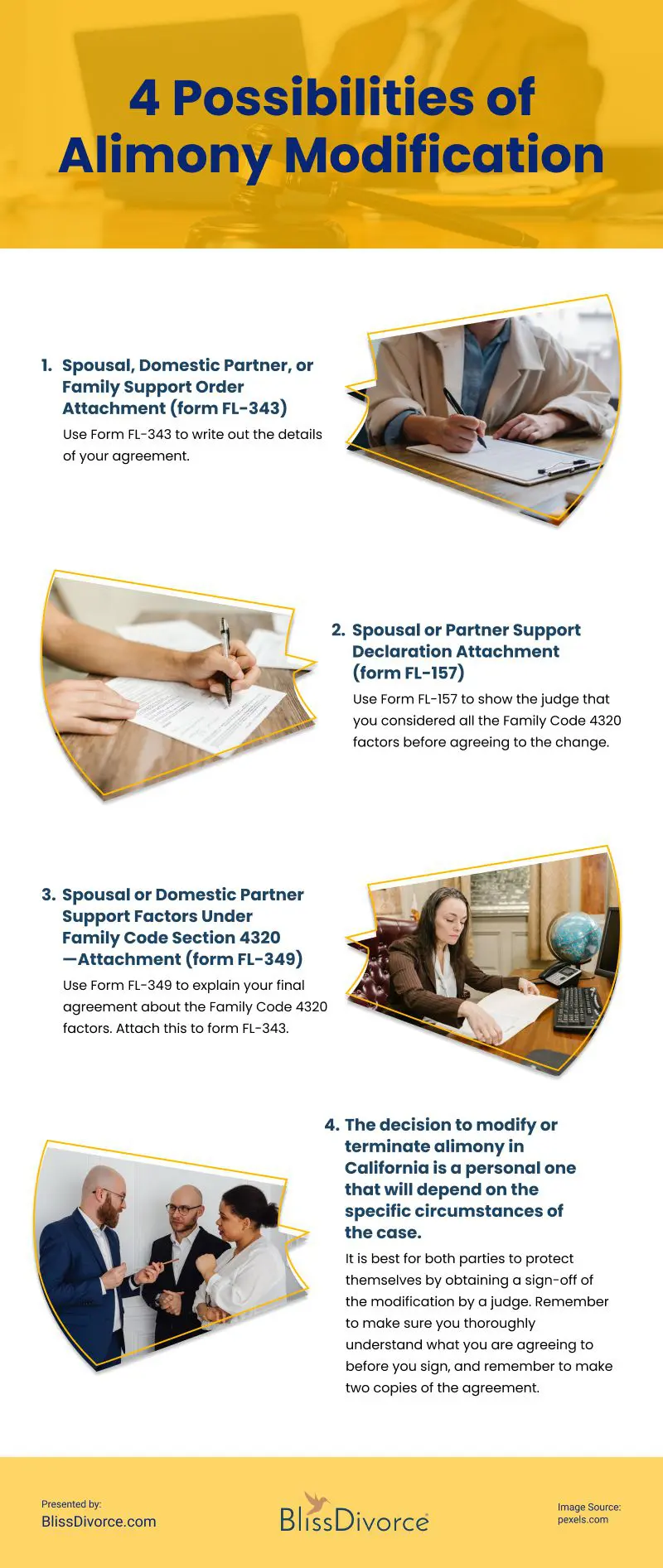
In California, spouses are eligible for spousal support regardless of their gender. Suppose one partner needs financial assistance, and the other can afford the payment. In that case, a judge will order alimony from the higher-earning spouse — provided both parties meet qualifications for such an arrangement regardless of gender identity.
If a court mandates alimony payments, the responsible party cannot deny this decree. However, they may request a modification if there are grounds for reversing the payment.
Changes in the Agreement
Couples communicating and collaborating can modify or terminate alimony by signing a settlement agreement. Such agreements allow partners to find a beneficial arrangement for both parties.
Circumstances have Change
Alimony can be adjusted or terminated when a significant change occurs in the circumstances of either party, like an alteration in their income or living situation. For instance, if the contributor experiences a great decline in salary or their partner becomes financially self-reliant, alimony may cease entirely.
Recipient Spouse Remarries
If the alimony recipient ties the knot again, there is usually a significant change in circumstances that may warrant terminating alimony payments. In most cases, remarriage can lead to the termination of alimony.
Cohabitation
In California, a cohabitating relationship refers to two individuals living together and sharing an intimate or romantic connection without being married. In this case, alimony payments can be modified or discontinued if the recipient spouse decides to start residing with their new partner in a romantic partnership. If this happens, the court may deem that further alimony isn’t necessary and thus terminate or adjust the existing order accordingly.
Modifying or stopping alimony payments can be a complex process. It’s essential to recall that alimony primarily provides financial backing for spouses who may lack the means to care for themselves after divorce. Therefore, whoever wishes to modify or discontinue paying any alimony obligations must prove there has been an immense variation in their circumstances. Simply pointing out that things have changed or the award no longer works isn’t sufficient evidence when seeking modification/termination.
Altering or discontinuing alimony requires spouses to submit a written Declaration of Change. They can pen this themselves, but it may be simpler and less time-consuming for them to go to their local court’s self-help center, where they will find various forms at the ready.
- The Spousal, Domestic Partner, or Family Support Order Attachment (form FL-343) clarifies and ensures your agreement is in writing.
- To demonstrate that you have thoughtfully considered all the stipulations in Family Code 4320, attach form FL-157 – Spousal or Partner Support Declaration Attachment – to your hearing petition.
- To ensure your final agreement complies with California Family Code Section 4320, attach Spousal or Domestic Partner Support Factors Under Family Code Section 4320—Attachment (form FL-349) to form FL-343. It will provide clarity and transparency regarding the factors of consideration for spousal support.
Alimony petitions require meticulous attention to ensure the agreement is legally enforceable and considers all relevant factors. Since the specifics of your situation may vary, it’s best to speak with a lawyer who can explain the process to you and keep your interests in mind. They can also help ensure the agreement is fair and legally binding.
Comments
Download this infographic.
